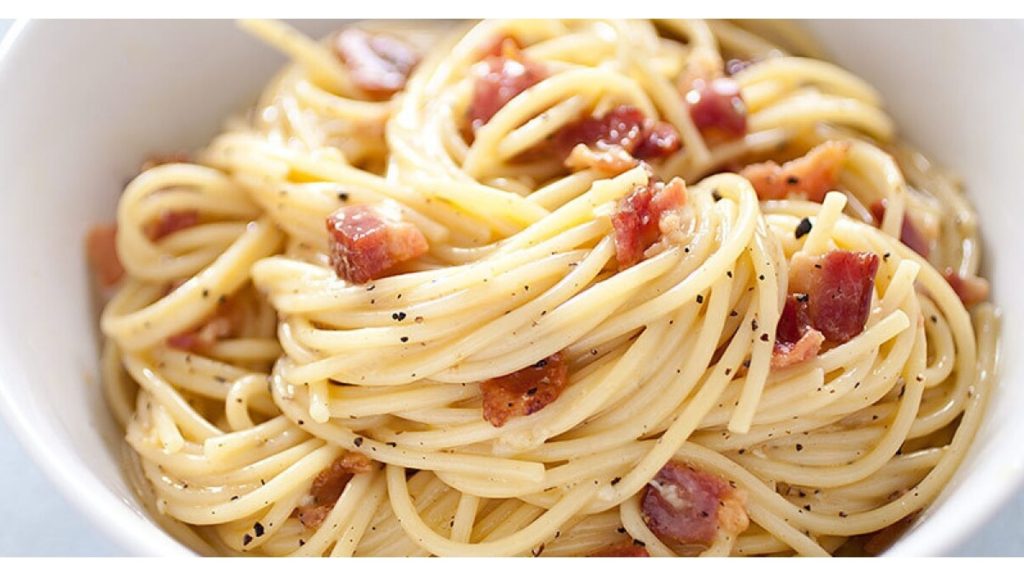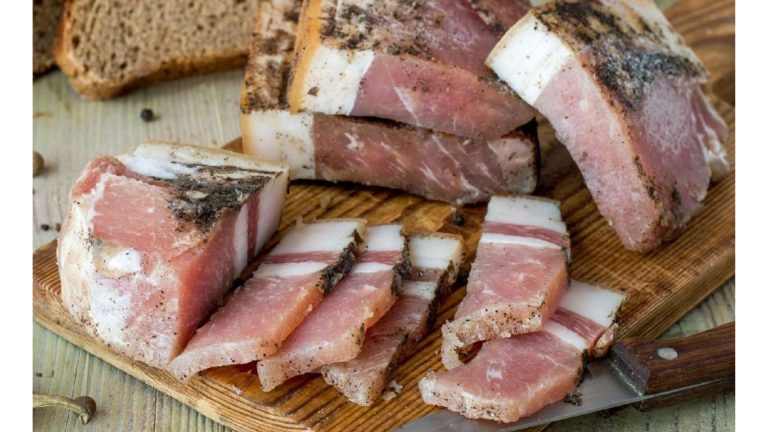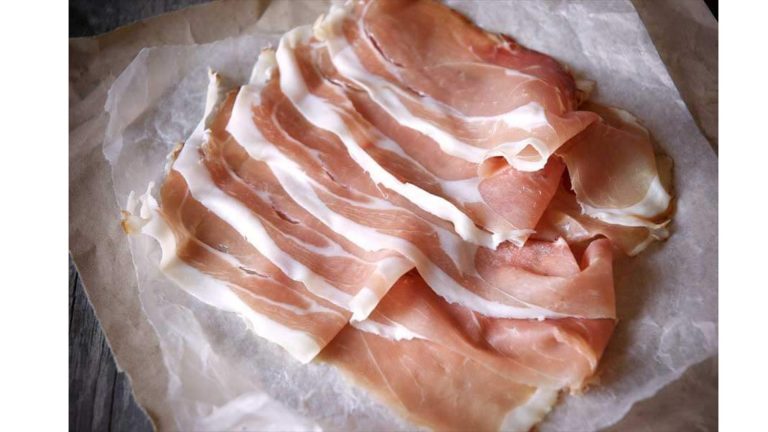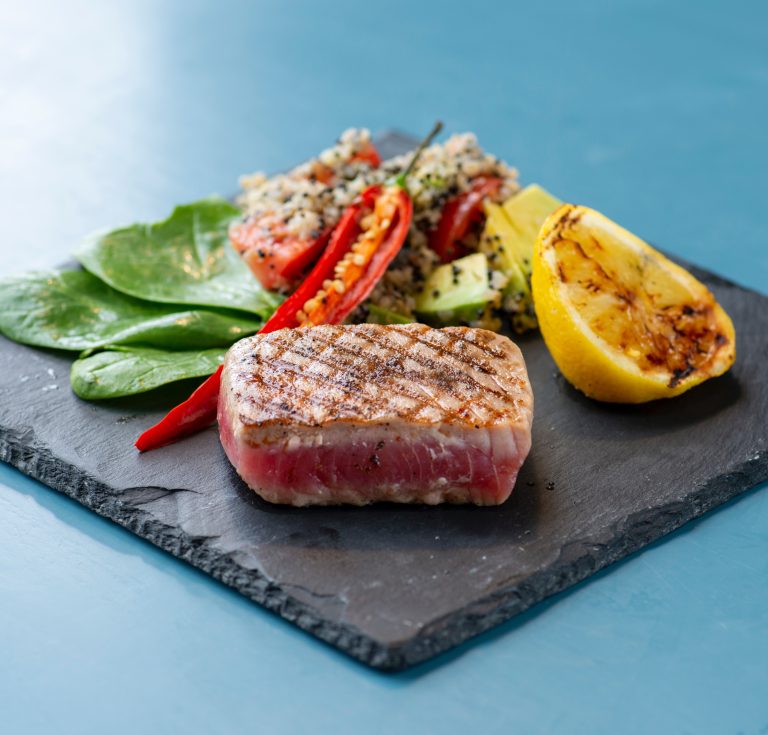Guanciale vs Pancetta for Carbonara
Cured pork cuts from the animal’s belly and cheek are guanciale and pancetta respectively.
Spaghetti Carbonara is one of the famous Italian pasta dishes that use them as central ingredients.
It is very common to use guanciale instead of pancetta in a carbonara recipe, but the two items are very similar and may be substituted for each other with minimal effect.
Guanciale has a stronger flavor profile and a sweeter taste, but it is slightly harder to find and requires careful selection.
Pancetta is leaner and sweeter, and it is easier to find and a good substitute for guanciale.
Pancetta is a common substitute for authentic carbonara, which is made using guanciale.
You are in luck if you know the difference between the two cuts when making carbonara.
This article will help you understand which of these two ingredients is the best for the famous Italian dish called Carbonara.
It’s a dish that is enjoyed by almost everyone around the world, but still, some people prefer to eat it with pancetta, others with guanciale and some are a bit confused about which one they should choose.
Read on to get a better understanding.
Table of Contents
Is Carbonara Made With Pancetta or Guanciale?

Carbonara can be made with cured pork, which is listed in many of the recipes. Italians like to use the word “guanciale”.
It was made with pancetta and replaced by Guanciale, according to earlier published versions of the recipe.
One of the first carbonara recipes was published in an Italian magazine. The ingredients listed were spaghetti, pancetta, egg, garlic, and gruyere.
Today, it would be considered wrong to say that guanciale replaced pancetta in the 1960s.
According to some theories, carbonara was invented during a period of food shortages in Rome during and after World War II.
Eggs, dry spaghetti, pecorino, and pancetta were included in the baskets that the charcoal burners filled with.
The name carbonara derives from a word meaning “coal burner.” Some believe the dish was created as a quick meal by these workers.
Italians believe that a carbonara should be made with guanciale, even though the meal began with pancetta.
The porky flavor of the animal’s cheek fat is what they like the most.
Carbonara With Guanciale vs. Carbonara With Pancetta
Carbonara and guanciale are both types of cured pork meat, so they are easily interchangeable.
Since they can be used, let’s look at their similarities and differences as pork meats and what that means for a carbonara.
Similarities
Before being cooked, guanciale and pancetta are cured to draw out the moist air.
They are Marinated using the same seasonings before curing. Carbonara requires a thick cut of pork with a distinct pork flavor and they both work well in this dish.
Differences
Guanciale
The cheek of the animal is where guanciale is taken. The area contains more fat and less meat, making it less expensive.
The fat is harder than before. It becomes a better cut when it’s cooked. The depth of taste in a carbonara is due to fat melting into the ingredients.
Guanciale has a more potent flavor and is softer than pancetta.
It stands out from other strong carbonara ingredients and gives the dish an overall depth that pancetta can’t match.
Pancetta
There is a cut on the animal’s belly called Pancetta. This cut is more expensive because the curing process takes more time.
When cooked, this meat is slightly less fatiguing than Guaanciale. The taste is not as strong as it could be.
If people find the taste of guanciale too strong, they will usually use pancetta in their carbonara.
Spaghetti Carbonara Recipes with Guanciale/Pancetta
Carbonara With Guanciale
Ingredients Needed
- Four ounces of guanciale. Cut it into half cm cubes
- Two heaped tablespoons of extra virgin olive oil
- Three large eggs kept at room temperature
- 100 grams of freshly grated pecorino romano
- Freshly ground black pepper
- 450 grams of spaghetti
Steps
- In a large skillet, cook the guanciale with oil for approximately two minutes, until the edges begin to turn brown.
- The pieces should not get too crispy.
- The pan should be put aside to keep the Guanciale warm.
- Bring five liters of water to a boil over high heat in an eight-liter pot.
- Add a small amount of kosher salt when it’s boiled.
- When cooked, add the pasta and stir frequently.
- While the spaghetti is cooking, break your eggs into a small bowl, then add all the cheese and a generous amount of pepper.
- When it is smooth, gently whisk the mixture until it is smooth.
- Reserve a cup of the pasta water, and cook the spaghetti.
- The pasta should be put in the skillet with the Guanciale over low heat.
- If you want to pour the egg and cheese mixture into the spaghetti, hold the skillet slightly above the burner.
- To blend everything in the pan, if you are skilled at tossing food with deft wrist movements, do so.
- To quickly mix, remove the pan from the heat and use two wooden spoons.
- If you use a blending technique, make sure it is fast or spaghetti will get cold and eggs will not cook properly.
- The heat from the pasta should allow the eggs to cook and create a creamy sauce.
- If you want to add extra smoothness to your ingredients, use some of the pasta water that was reserved earlier.
Carbonara With Pancetta
Ingredients Needed
- Three large free-range egg yolks
- 40 grams of Parmesan cheese
- A 150 grams piece of higher-welfare pancetta
- 200 grams of spaghetti
- One garlic clove
- Extra virgin olive oil
Steps
- Place your egg yolks into a bowl.
- Put it to one side after seasoning it with pepper.
- You can cut your pancetta into strips or cubes.
- Spaghetti can be boiled in a large pot of salted water.
- You can add a lot of oil to your frying pan.
- The garlic should be added to the oil for one minute.
- Next, add your pancetta and stir until it starts to cook.
- Remove the garlic from the pan after the pancetta has been cooked.
- Take some of the water, drain your spaghetti and add it to your pancetta.
- All flavors should be soaked up before being removed from the heat.
- Add some of the pasta water and mix with the pepper.
- Pour the egg mixture into the stream.
- The egg can be cooked gently.
- If necessary, add some pasta water to the mix.
Conclusion
Italians pride themselves on their traditional dishes and are passionate about the ingredients used in them.
The strong porky flavor created from a cut of Guaanciale is what they love in carbonara.
It gives the dish a different texture than pancetta can provide. They want to preserve their tradition of carbonara with the use of Guanciale.
The overall character of Guanciale is what makes carbonara, carbonara, according to them.
According to the origins of the dish, the pancetta was the key ingredient. The pancetta was used for a while before being replaced by Guanciale.
I guess the moral of the story is that carbonara is carbonara whenever a cut of cured pork is included.
Hopefully, there will be some information in this case. If you read the pancetta for carbonara article, you’ll be able to decide which one to try.

Foodie and a passionate cook, I am here to share all of what I know about cooking, kitchen, and food prepping.
Follow me for delicious and healthy recipes.







